Is your fridge temperature for beer optimized to bring out the best flavors in your favorite brews? The relationship between beer temperature and taste is an essential aspect of enjoying your beer to its fullest potential.
In this guide, you’ll learn how to set the perfect fridge temperature for various beer styles, ensuring optimal flavor and freshness in every sip.
Short Summary
- Understanding beer temperature and flavor is essential to maximizing their potential.
- Setting and maintaining a fridge temperature for beer ensures optimal flavor, aroma, and freshness of each sip.
- Different beers should be served at varying temperatures for the full range of flavors & aromas. Tips are provided for serving at the right temp & troubleshooting any issues.
Understanding Beer Temperature and Flavor
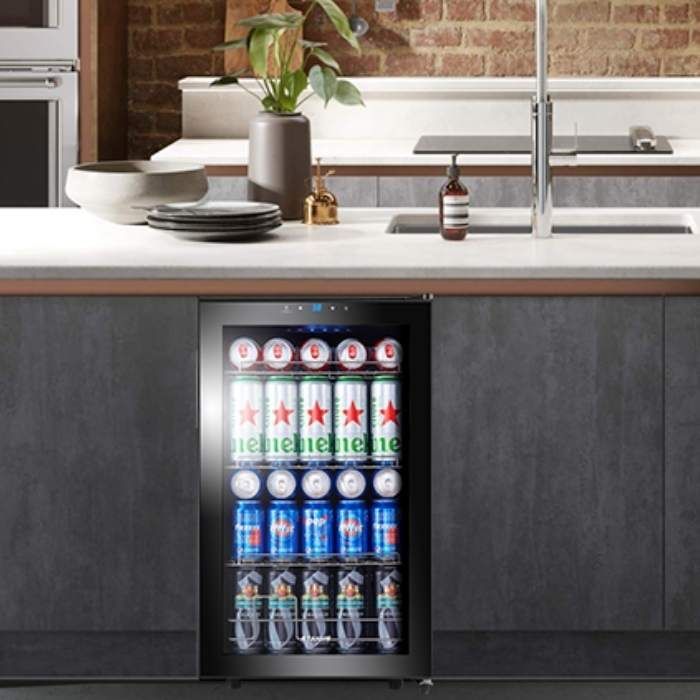
The temperature of beer has a significant impact on its flavor and aroma. Cooler temperatures reduce the intensity of flavors, while warmer temperatures intensify them, ultimately affecting the beer taste.
If beer is served at an excessively warm storage temperature, its bitterness and carbonation will be diminished, resulting in a flat taste.
Finding the optimal temperature for your beer, including craft beer, is key to unlocking its full potential.
The optimal temperature range for beer varies depending on the beer style, so it’s essential to understand the unique requirements of each type of beer.
To ensure the perfect drinking experience, take notes on the changes in flavor as the beer warms up and adjust your fridge temperature accordingly.
Remember, storage temperature can significantly influence your beer’s flavor, so finding the ideal temperature for your favorite brews is essential for the best drinking experience.
The Importance of Beer Fridge Temperature
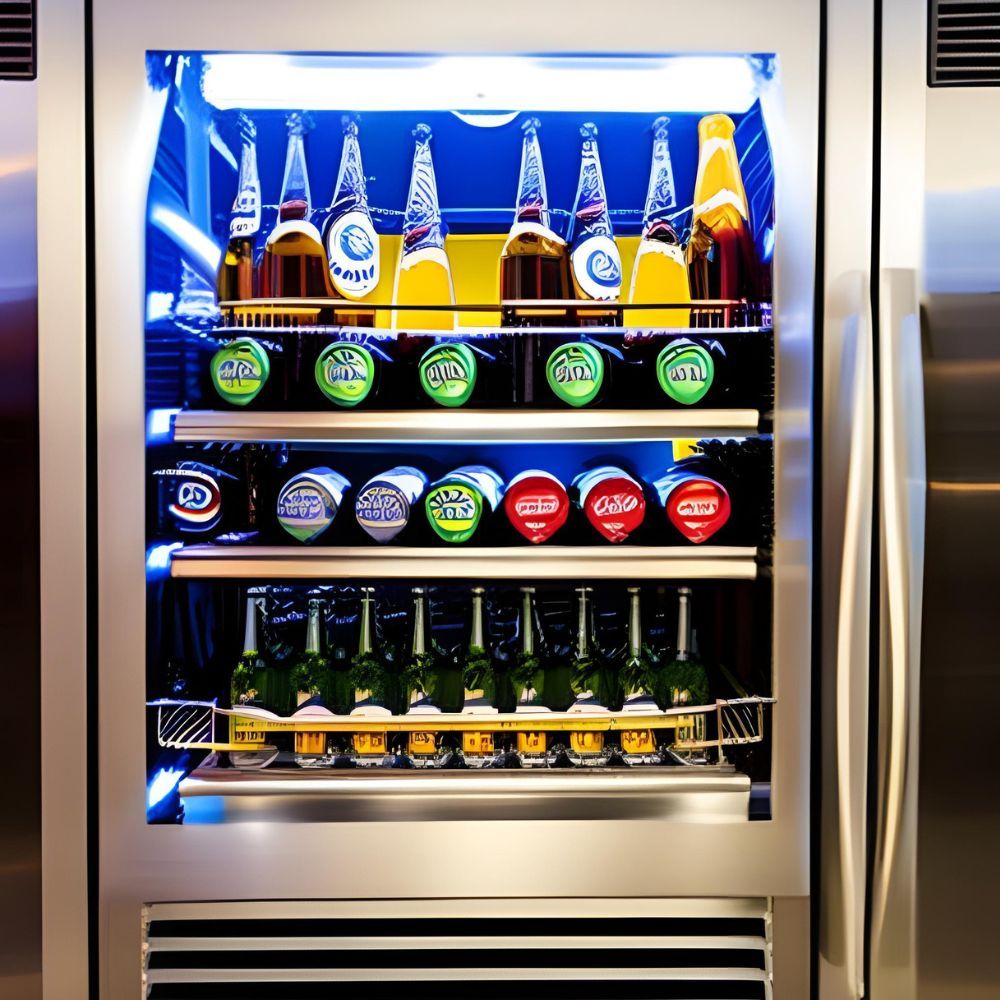
Fridge temperature plays a crucial role in preserving the quality and freshness of various beer styles and enhancing their distinctive flavors and aromas at the right beer serving temperatures.
Setting the proper fridge temperature is essential to properly store your beer, ensuring it remains fresh and flavorful for as long as possible.
Storing beer at the wrong temperature can lead to a disappointing drinking experience.
Drinking beer stored at a cellar temperature that is too low can become less flavorful and aromatic, while storing beer at extremely cold serving temperatures can result in flat and tasteless beer, numbing your taste buds.
By understanding the importance of fridge temperature and adjusting it accordingly, you can guarantee the best drinking experience for yourself and your guests.
Different Beer Styles, Different Temperatures
Each beer style has its own ideal temperature range, which should be considered when setting your fridge temperature.
The ideal temperature for a beer is contingent upon the style, color, and alcohol content, as well as individual preference.
For example, pale lagers and pilsners should be served at 38-45°F (7-9°C), while dark lagers should be served at 45-50°F (9-13°C).
By understanding the optimal temperature ranges for different beer styles, you can ensure that each beer is served at the perfect temperature, enhancing its unique flavors and aromas.
Keep in mind that personal preference plays a role as well, so feel free to experiment and find the sweet spot that suits your taste buds best.
Optimal Temperature Ranges for Common Beer Types
Knowing the optimal temperature ranges for common beer types is essential for ensuring the best drinking experience.
Here’s a guide to help you set the perfect temperature for each beer style according to this Homebrewer’s Association article.
| Beer | Suggested Temperature |
| American Mainstream Light Lagers | 33° – 40° F |
| Pale Lagers, Pilsners | 38° – 45° F |
| Cream & Blonde Ales | 40° – 45° F |
| Nitro Stouts | 40° – 45° F |
| Belgian Pale Ales, Abbey Tripels | 40° – 45° F |
| Wheat Beers | 40° – 50° F |
| Lambics | 40° – 50° F |
| Dark Lagers | 45° – 50° F |
| American Pale Ales & IPAs | 45° – 50° F |
| Stouts, Porters | 45° – 55° F |
| Strong Lagers | 50° – 55° F |
| Real & Cask Ales | 50° – 55° F |
| Belgian Dubbels | 50° – 55° F |
By using the provided temperature ranges, you can ensure each beer type is served at the perfect temperature, unlocking its full flavor potential. Remember, it’s essential to adjust your fridge temperature according to the type of beer stored inside.
This will ensure that all your beers are kept at their ideal serving temperatures, providing the best drinking experience.
Setting Your Beer Fridge to Perfection
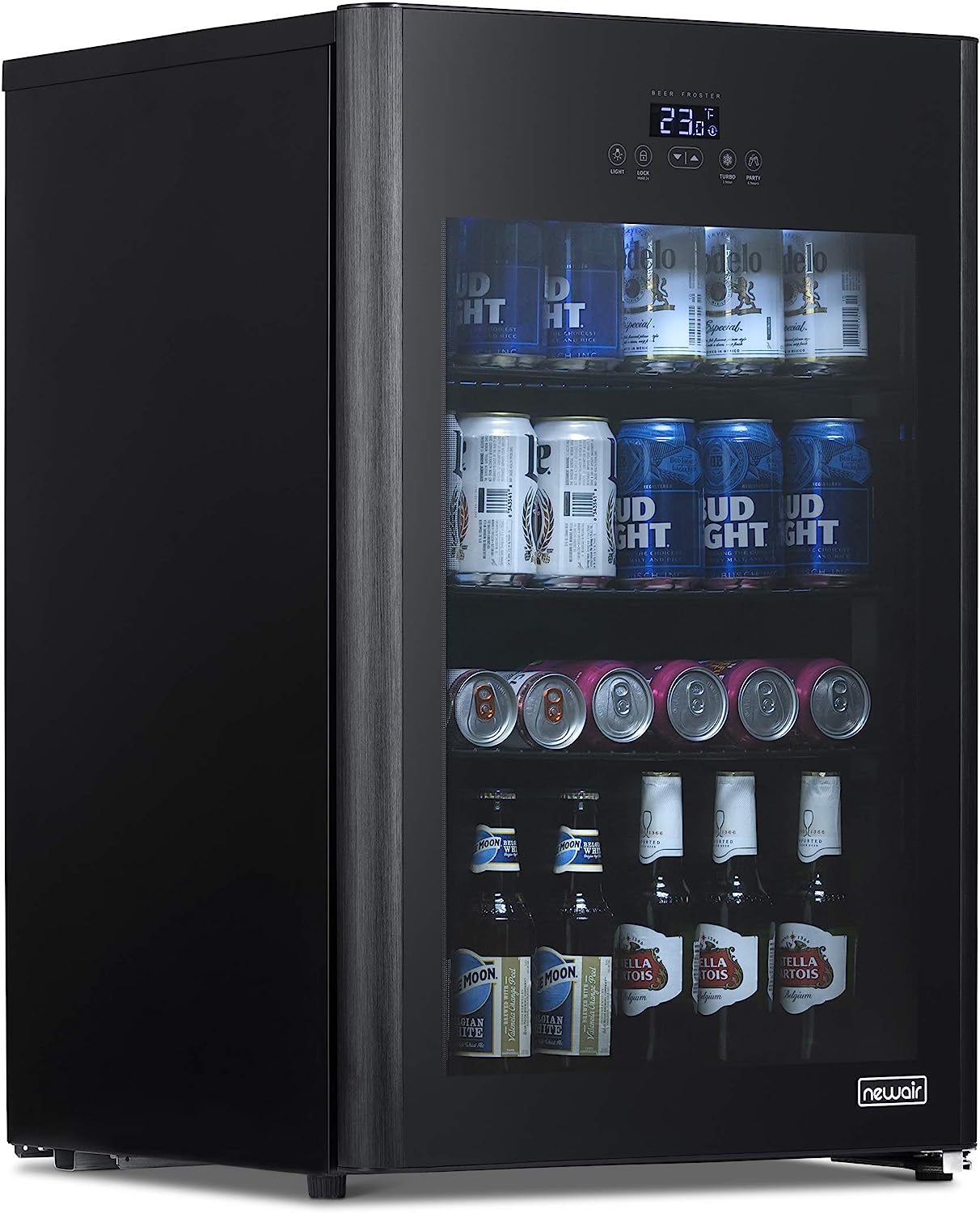
To set your beer fridge to the perfect temperature for your preferred beer styles, first identify the type of beer being stored and then set the temperature accordingly. This will ensure optimal flavor and freshness in every sip of your favorite brews.
Keep in mind that different beer styles require different temperatures, so it’s essential to adjust the temperature of your beer fridge accordingly.
By understanding the unique requirements of each beer type and setting the proper fridge temperature, you can guarantee the best drinking experience for yourself and your guests.
Multiple Beer Types in One Fridge
If you’re storing multiple beer types in one fridge, it’s crucial to find a balance that suits the majority of the beer types stored.
One solution is to employ a dual-temperature beer fridge, which allows you to store different beer types at varying temperatures, ensuring each beer is maintained at the ideal temperature for its style.
In addition, keep beer away from sunlight and fluorescent light to avoid skunking, which can negatively affect the flavor of the beer.
By carefully organizing your fridge and adjusting the temperature to accommodate the majority of beers, you can ensure that all your store beer is kept at their optimal temperature for maximum enjoyment.
Monitoring and Adjusting Temperature
To monitor and adjust the temperature of your beer fridge, utilize a simple alcohol thermometer to check the temperature periodically.
If you notice any fluctuations in temperature, adjust the temperature accordingly to maintain the ideal conditions for your beer collection.
By regularly monitoring and adjusting your fridge temperature, you can ensure that all your beers are kept at their optimal temperature, guaranteeing the best drinking experience.
Remember, consistency is key to preserving the quality and freshness of your beer collection.
Storing Other Beverages in Your Beer Fridge
Your beer fridge can also be utilized for the storage of other beverages, such as wine and soft drinks.
Each type of beverage has its own ideal temperature range, so it’s essential to adjust the temperature accordingly to maintain optimum flavor and freshness. In fact, beer fridges are versatile enough to cater to various temperature requirements for different beverages.
For instance, spirits and liqueurs should be stored at temperatures ranging from 55-60 degrees, soft drinks at 40°F, and wine at temperatures ranging from 40°F-65°F.
Like beer, the serving temperature of wine also influences its taste, so it’s crucial to store it at the appropriate temperature range for the best drinking experience.
When allocating space for other beverages in your beer fridge, assign a separate area away from the beer and ensure that the temperature remains consistent, avoiding any abrupt changes.
By doing so, you can guarantee that all your beverages are stored at their ideal temperature, providing the best drinking experience for you and your guests.
Tips for Serving Beer at the Right Temperature
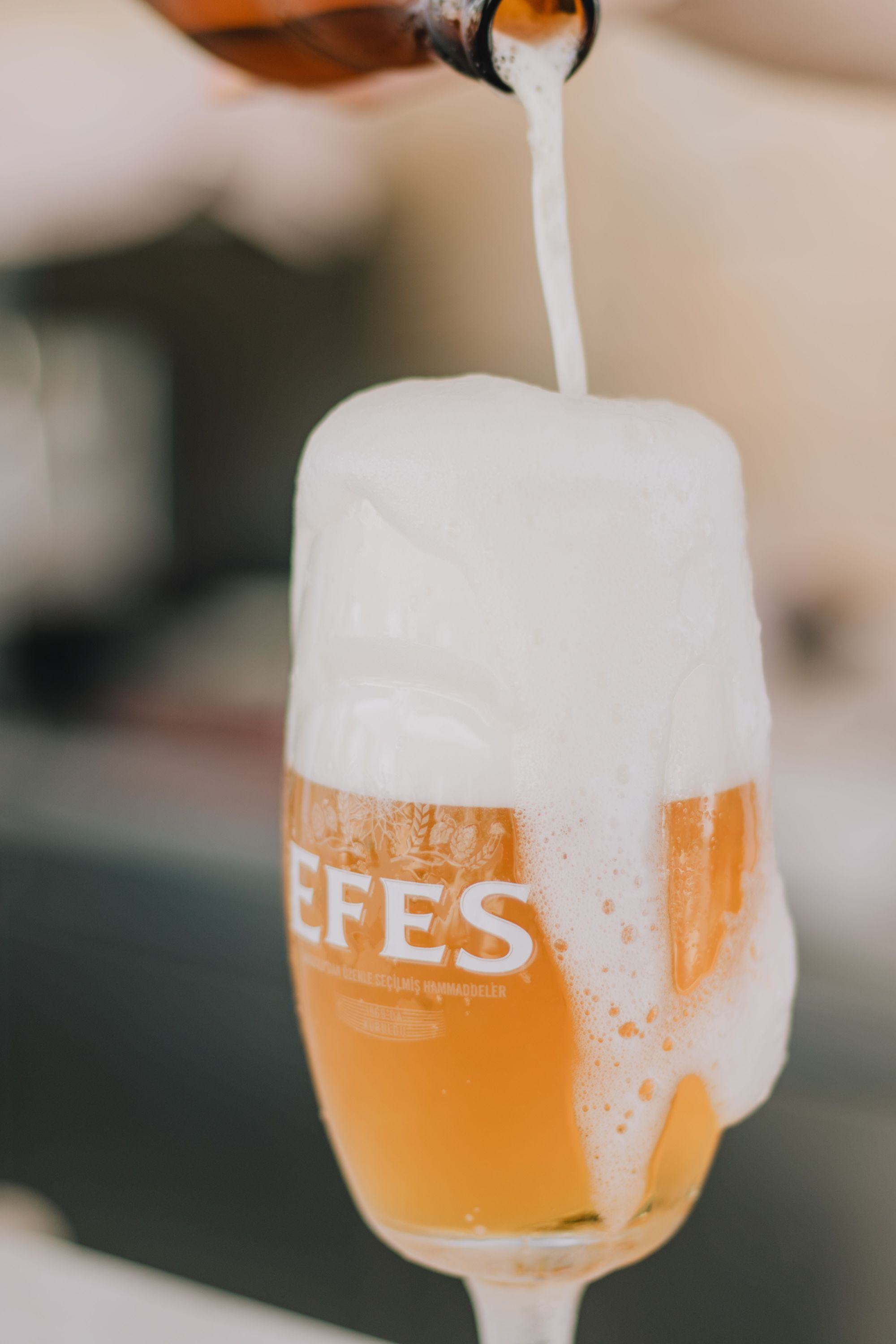
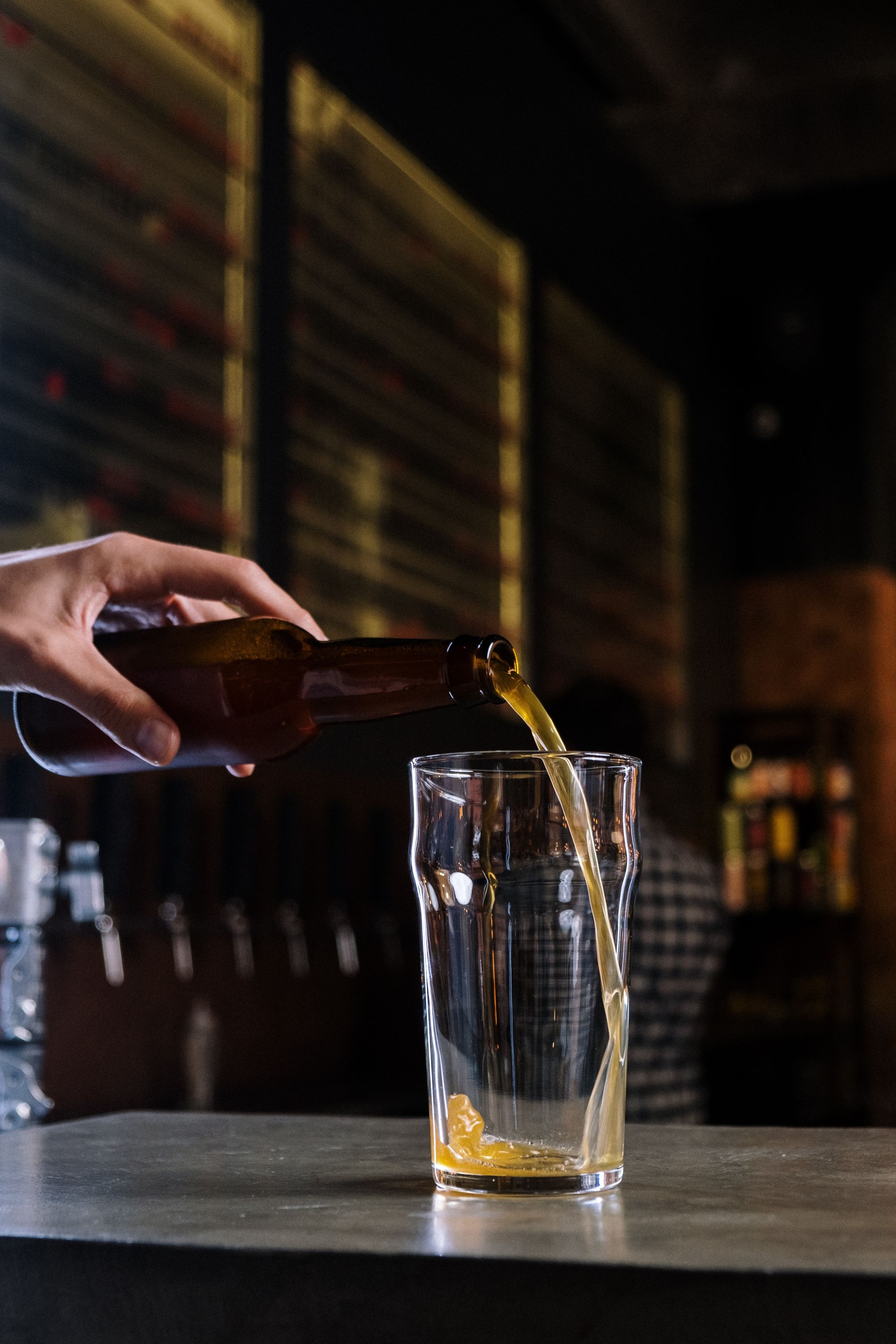
Serving beer at the right temperature is essential for the best drinking experience. Here are some tips to ensure that your beer is served at the perfect temperature.
- Use chilled glassware: Serving beer in chilled glassware can help maintain the ideal temperature throughout the drinking experience.
- Allow beer to warm up slightly before serving: Beer served at a slightly warmer temperature than recommended can allow the flavors and aromas to develop more fully, enhancing the drinking experience. Temperature plays a significant role in the taste of beer, altering the flavor profile. Lower temperatures emphasize the sweetness and bitterness of the beer, while higher temperatures emphasize the maltiness and body of the beer.
- By following these tips and understanding the impact of temperature on beer taste, you can serve your beer at the perfect temperature, ensuring the best drinking experience.
Beer Fridge Maintenance and Troubleshooting
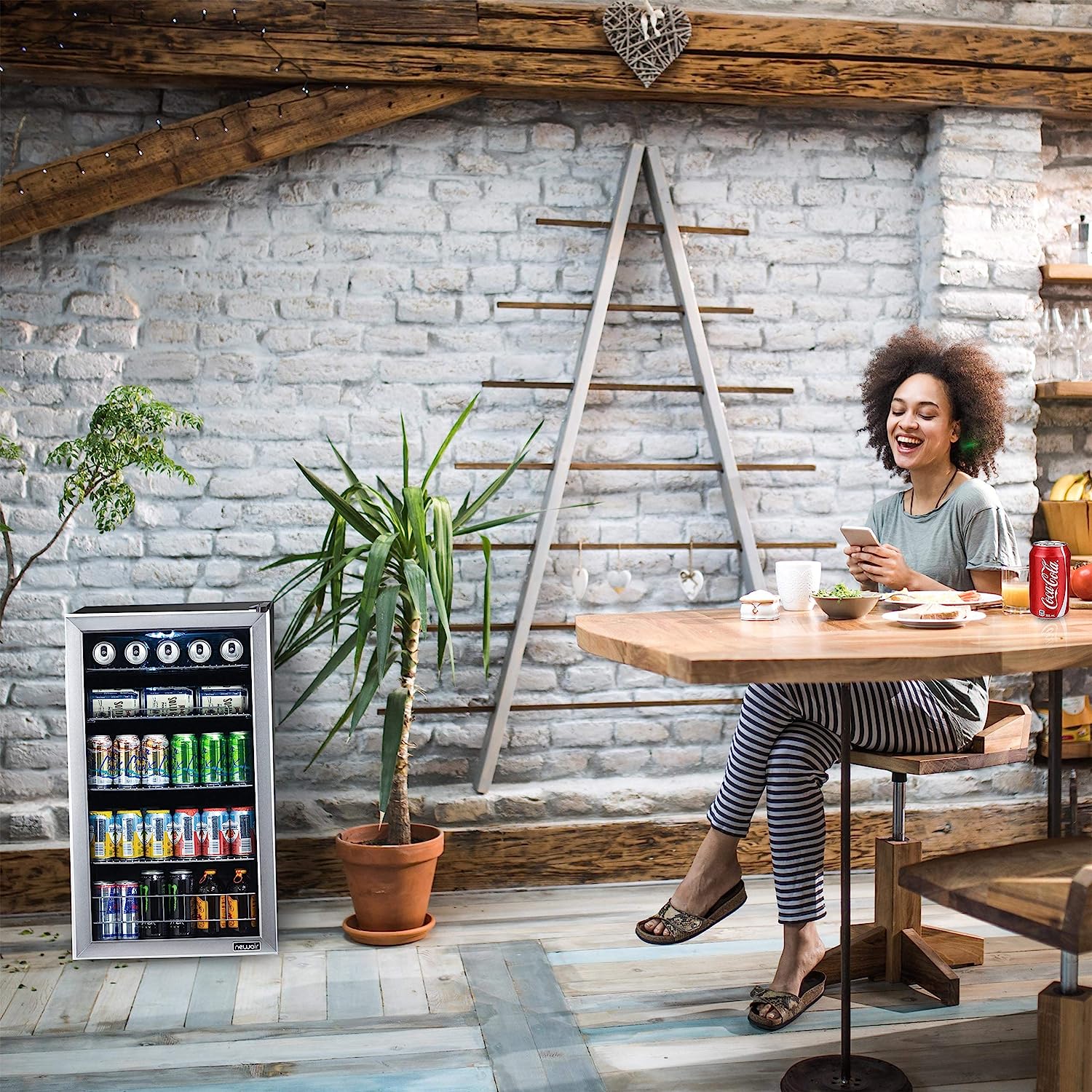
Proper maintenance and troubleshooting of your beer fridge are crucial to ensure it continues to keep your beer collection at the perfect temperature.
To clean the door seals of your beer fridge, use a rag soaked in soapy water and wipe down the doors. This will help maintain a tight seal and consistent temperature inside the fridge.
To clean the interior of your beer fridge, mix one tablespoon of baking soda with one quart of warm water, then use a soft cloth to wipe down the fridge’s interior. This will help remove any odors and keep your fridge clean and fresh.
Organize your beer fridge by type or brand of beer, rotating the stock regularly to ensure that all your beers are kept at an optimal temperature and making the most of door storage and vertical space.
By following these maintenance and troubleshooting tips, you can keep your beer fridge in top condition and guarantee the best drinking experience for your favorite brews.
Looking for that perfect beer fridge to store your beer? Check out our Review Guide Article on Beer Fridges.
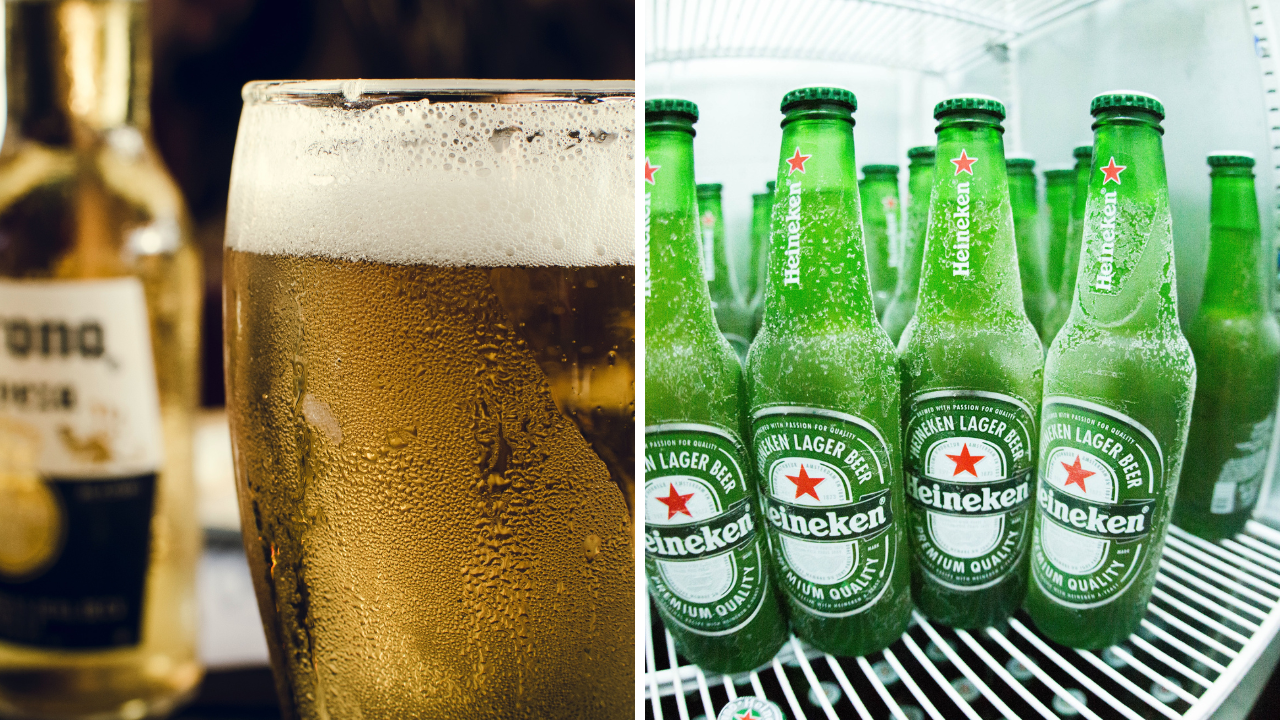
Summary
In conclusion, understanding the importance of fridge temperature for beer and how it affects beer flavor is essential for the best drinking experience.
By setting the perfect temperature for your preferred beer styles, storing multiple beer types in one fridge, and maintaining your beer fridge, you can ensure that every sip of your favorite brews is as enjoyable as possible.
Cheers to perfectly cold beer!
Frequently Asked Questions
Can beer be stored at 40 degrees?
Overall, it is generally not recommended to store beer at 40 degrees as this temperature is too warm and can affect the flavor of the beer. Low temperatures help preserve the flavor of the beer, so storing it at a lower temperature is suggested.
Can beer be stored at 50 degrees?
Yes, beer can be stored at 50 degrees. To preserve its flavor and shelf life, it is recommended to store beer in a cool, dark place with consistent temperature between 45 and 55 degrees Fahrenheit.
What is the best temperature to store beer?
For optimal flavor and shelf life, you should store beer at a temperature between 45-55° F. Any higher, and the beer may go bad due to oxidation, too low and the flavors won’t develop as they should. Keeping beer in a cool, dark area is the best way to maintain this temperature range for an extended period of time.
Does beer need to be refrigerated?
It is advised to store all beers in a refrigerator, as this is the best way to keep the beer fresh and prevent it from developing off flavors. Refrigeration is essential for draft and craft beer, while storage at room temperature or just above may suffice for canned or bottled beer.
How does temperature affect beer taste?
As the temperature of beer rises, it intensifies the maltiness and body of the beer, while cooler temperatures enhance the sweetness and bitterness. Consequently, temperature can have an impact on how the beer tastes.










